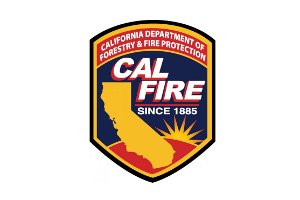Listen to the QUEST radio story Fighting Fire Where Homes and Wilderness Meet
On the day of our trip, the hills were green, but Price said not to let that fool me. “In a couple of months,” he said, “these hills will be golden and ready to burn.”
Homes here straddle an invisible line. On one side is the town of San Ramon. On the other is what’s called state responsibility area.
If a fire breaks out there, in the state responsibility area, it’s up to CalFire to fight it. If the burn is on the other side of the line, then the job falls to the local fire department. But there are houses on both sides of the line, in the city limits And protecting them, says Chief Price, requires both agencies.
That’s because fighting fires here is much harder than it would be in town. There’s no fire station nearby, which means the response time can be as long as 15 or 20 minutes (compared to five or fewer for homes in town). The single-lane roads are steep and winding. Fire fighters would have to truck in water, and many areas are only accessible to hand crews.
Chief Price says by far the best way to fight a fire up here is with airplanes, a resource only CalFire can provide.
In January, the governor’s plan was this: Gradually scale back those state responsibility areas to places where there are no homes at all, places that are truly wild lands. That, after all, is what CalFire was designed to do, says H.D. Palmer, spokesman for the state Department of Finance.
“We’ve seen a lot of encroachment and development into these areas,” says Palmer, “and one of things we proposed to do was to alter who was responsible for wild land fire suppression and emergency response."
This idea had a lot of support from environmental groups, like Sierra Club California, which Bill Magavern directs. “We think those governments that are expanding development into fire prone areas should be the ones to fight the cost in those areas, instead of always asking state taxpayers to come to the rescue,” says Magavern.
Governor Brown’s proposal would have shaved roughly 250 million dollars a year off the state budget. But it met resistance from counties, including Contra Costa, where home values -- and, therefore, property taxes -- have been down for three straight years, meaning less revenue for the fire service.
"We’ve had a hiring freeze for three years,” says Chief Price. “and we make reductions wherever we can make them. It’s difficult to reduce costs and not reduce service levels. But that’s what we’re trying to do.”
Last week, Governor Brown scaled back his proposal. Instead of shrinking CalFire’s area of responsibility across the state, he will instead focus on just a few counties: Marin, Kern, LA, Orange, Santa Barbara and Ventura. Instead of saving 250 million dollars a year, the state would save about 52 million dollars.
H.D. Palmer, from the State’s Department of Finance, says there’s another way CalFire can trim costs. It has to do with a policy that Governor Schwarzenegger put in place in 2004, after a series of massive wildfires scorched Southern California. The policy required that each fire truck be staffed with four firefighters, instead of three. This added about $33 million dollars to CalFire’s annual budget.
But when Palmer’s team ran an analysis of the policy, they found no improvement in how quickly CalFire crews contain fires with four fire fighters, versus three. In fact, this responsiveness (measured in the percentage of wildfires that crews can contain before the fire spreads beyond 10 acres) actually decreased, from 95 percent to 93 percent, after the state added the fourth fire fighter.
Palmer says this difference is not significant. But it proves that the state can cut back on fire fighters without affecting safety.
Carroll Willis, with the California Professional Firefighters, a statewide union, rejects that interpretation. He says fire fighting is harder than it used to be.
“This day and age in California,” says Wills, “it’s pretty difficult to find an out-and-out pure forest fire. There’s almost always some development.”
And that, he says, calls for more fire fighters. “More personnel is always going to lead to faster response time, and when you’re fighting fires, seconds count.”
The state legislature could vote on the governor’s proposed budget as soon as this week.
37.7719233 -121.994914
 One idea for closing the state budget gap proposes trimming funds for Cal Fire, the state fire-fighting agency.
One idea for closing the state budget gap proposes trimming funds for Cal Fire, the state fire-fighting agency.